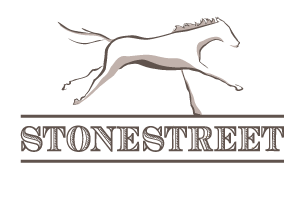Each year from January to June, Kentucky’s Bluegrass region serves as the birthplace for thousands of Thoroughbreds. While our mares and foals will receive a breakfast and lunch daily, the lion’s share of their nutrients will come from the grass they eat in their pastures. In this blog, we’ll get to the ‘root’ of how… Read more »
Subscribe to Our Blog
What’s in a Name? Racehorse Naming Rules
In our foal registration blog, we discussed how we register our new foals with the Jockey Club. While the foal is now officially registered, it is not necessarily named. Naming is a critical step for racehorses as they must be named in order to race or breed. Owners have eighteen characters, the limit for racehorse… Read more »
Leading the Way: Lead ponies
Track or lead ponies are horses that offer support and comfort for racehorses as they travel to and from the racetrack. Often older than their charges, a track pony or lead pony offers guidance and support, allowing the racehorse to focus on their job rather than the sights and sounds of the racetrack. Horses are… Read more »
The Colorful History of Racing Silks
In ancient Rome, charioteers wore brightly colored capes and headbands to identify themselves in races. On the battlefield, knights carried banners and bore their coat of arms with honor. In the world of sports, the uniform is the symbol of pride for the players and fans. But what about the Sport of Kings? Enter racing silks. The word “silks”… Read more »
So, You Want to Be a Trainer?
Thoroughbred trainers wear many hats: they care for their horses like teachers, they manage their stables like CEOs, and they are often thrown into the media spotlight like celebrities. It takes a lot of hard work and determination just to become a trainer and even more to compete at the highest level of racing. The first… Read more »
Get the Dirt on Racetrack Maintenance
Good track maintenance provides a solid foundation for both equine and human competitors. The goal of any maintenance program is to ensure that the surface is consistent, safe, and fair. In this blog, we’ll get into the nitty-gritty of how racetracks across the country create a level playing field for all entries. Based on its… Read more »
And They’re Off! How Racehorses Enter the Starting Gate
In our Gate to Great: Schooling for Success blog, we touched on the early days of training that familiarize young Thoroughbreds with the starting gate. Once a horse leaves our training center and arrives at the racetrack, these lessons will be put to the test. Per Kentucky statute, first-time entrants will not be allowed to race unless… Read more »
Bathing and Grooming Yearlings

In our yearling sale preparation blog, we covered the nutrition and fitness plans that help to bring out the best in our yearlings prior to their time in the sales ring. While not nearly as important as pedigree and physical characteristics, a glossy, well-groomed coat can go a long way towards making a yearling stand… Read more »
Make it Jockey Club Official: Foal Registration
One of the biggest steps toward becoming a racehorse in the United States is actually based on paperwork. While a foal born to a Thoroughbred stallion and a Thoroughbred mare is genetically a Thoroughbred, it cannot be a Thoroughbred racehorse unless we register it with The Jockey Club. Starting in 2017, The Jockey Club required… Read more »
Vital Signs
Vital signs are an important tool in detecting the early signs of ill health as well as being a useful training aid. Every person working with horses should know how to interpret these four signs: temperature, pulse, respiration and capillary refill time. Pulse The adult pulse rate at rest will be between 28 to 44… Read more »
